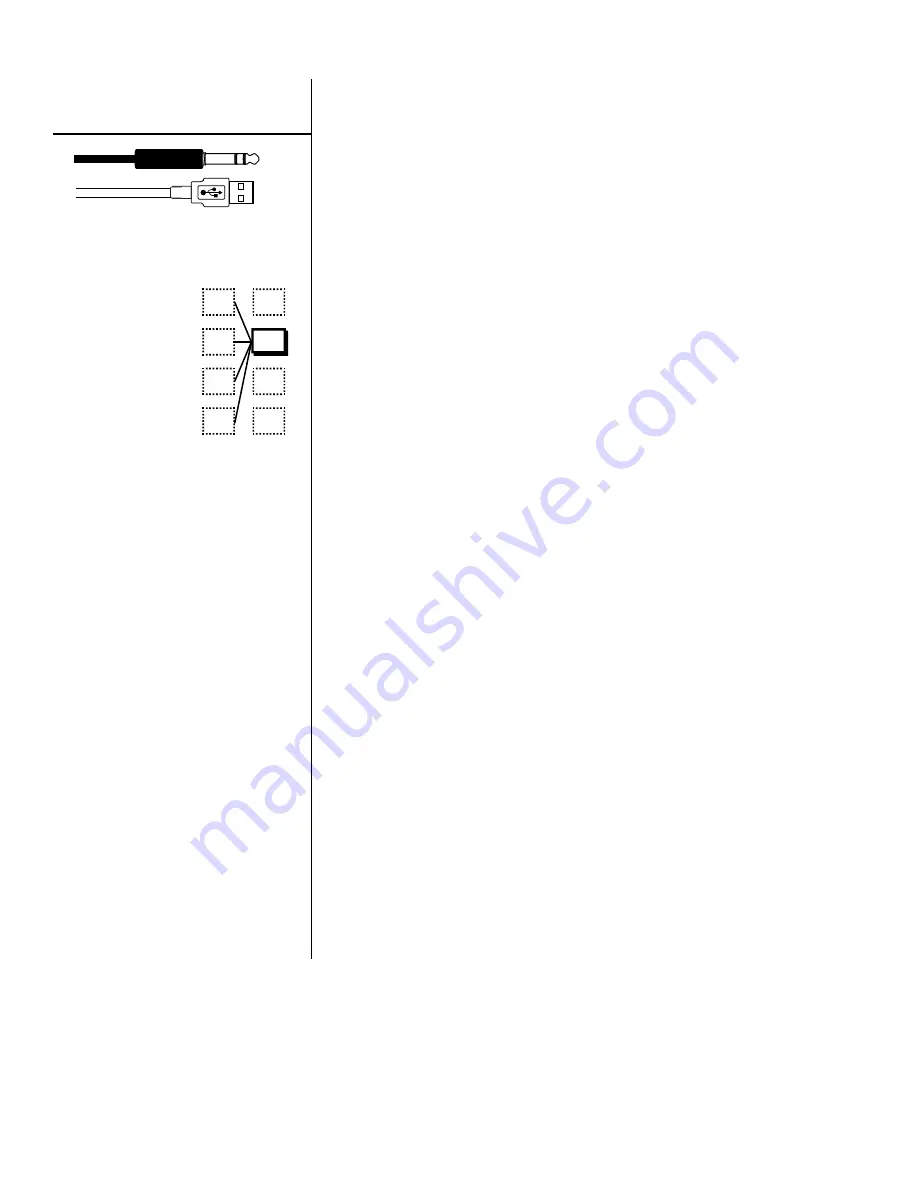
2 Connect
Configure the Reference Input
For the Tone Match block to work, it first needs to “capture” short
snippets of both the external “reference” signal and the sound of your
starting point preset, aka the “local” signal.
The
reference signal
reaches the block through any of 9 different
selectable inputs. These allow you to design a workflow that’s best for
you. Depending on the structure of your preset, select the appropriate
“REFERENCE SOURCE” input on the PROCESS page of the Tone Match
block’s edit menu. The following choices are available:
Row 1–4:
Selects any block from the column to the left of the Tone
Match block. Using one of these options requires that your reference
signal be routed on the grid to the Tone Match block. Except in rare
cases, it is best to use one of the other “direct input” options below.
Input 1–2:
Selecting
Input 1
or
2
effectively
ignores
the grid and
(invisibly) routes signal directly from the designated input to the refer-
ence input of the Tone Match block. “INPUT 2” would be the typical
selection when your reference signal is the analog output from a
computer audio interface or the feed from a mixer/mic pre connected
directly to the 1/4” inputs on the rear of the Axe-Fx II.
Block L–R:
Using the left or right inputs of the Tone Match block
depends on the reference signal being present on the grid and routed
to the appropriate block input. Like the options “Row 1-4”, this would
be a somewhat rare configuration.
USB:
Perhaps the most convenient way to pass a recording to the Tone
Match block is via USB. You don’t need to make any special I/O settings
to use this option. Simply play the file from your computer into the first
available Axe-Fx II USB output.
In all cases, the Tone Match block sums L+R when you stereo signals.
TMA
1
2
3
4
Set Proper Levels
It is important that the reference signal reaches the tone block at a
appropriate level. You can use the front panel input meters and the
I/O
Audio : Input
page to monitor and control INPUT 1 or INPUT 2 levels.
The meters and controls in your computer audio application can easily
establish that the levels of incoming USB signals are appropriate.
























